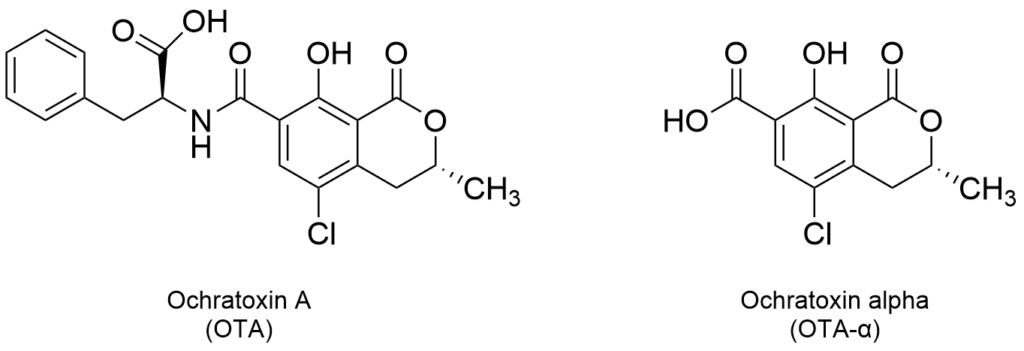Do you ever wonder about the invisible threats lurking in your everyday foods? Have you heard of ochratoxins, or realized that even staple ingredients, like flour, may contain hidden toxins?
Ochratoxins are a group of potent mycotoxins produced by certain molds, such as Aspergillus and Penicillium species. These molds can contaminate a variety of foods, from the grains that become your morning cereal or your night beer to the coffee beans that brew your first cup of the day, and even the dried fruits you might snack on. Ochratoxins not only represent a risk to food safety but also carry significant health implications, including kidney damage and potential carcinogenic effects. Through scientific exploration and practical insights, we aimed to shed light on where these toxins are found in foods and how they impact our health.
The European Food Safety Authority (EFSA), recently published a comprehensive review on Ochratoxin A (OTA) examining into its origins, absorption, and the subsequent risks it represents not only to animal health but also to the safety of food of animal origin. OTA presents a unique challenge due to its heat stability, though certain processing methods can reduce its presence in feed. The absorption and metabolism of OTA vary significantly across species, with most animals rapidly absorbing it in the gastrointestinal tract, where it binds tightly to plasma proteins. Interestingly, ruminants have a somewhat protective mechanism against OTA, thanks to the ruminal microbiota’s ability to degrade it into ochratoxin alpha (OTA-α), a less harmful compound.

Despite these differences, OTA’s transfer to animal products, such as milk, eggs, liver, and kidneys underscores the complexity of its impact on food safety. The review highlighted the specific vulnerabilities of monogastric species, like pigs and poultry, which exhibits more severe health outcomes compared to ruminants. These include impaired kidneys and liver functions, immunosuppression, and negative effects on growth. For all these reasons it becomes fundamental to monitor and manage OTA levels in feed to protect animal health and, by extension, human health. The EFSA’s risk assessment, based on thousands of analytical results, indicates a generally low risk of adverse health effects from OTA in feed for targeted animal species, thanks to established reference points for OTA content. Nevertheless, the CONTAM Panel‘s recommendations for further study and improved reporting and analytical methods reflect the need for a comprehensive approach to understanding and mitigating OTA’s risks. This underscores the broader challenge of ensuring the safety and integrity of our food systems in the face of complex, naturally occurring contaminants.
In this framework, Innovamol contributed to collect and organize relevant data on analytical techniques for occurrence, quantification, exposure, toxicity, toxicokinetics and the transfer from feed to animal-derived foods. Indeed, Innovamol’s report, based on a systematic literature search, provided EFSA with a robust foundation for the comprehensive risk assessment. This collaboration exemplifies how a comprehensive scientific inquiry can improve regulatory frameworks and guide industry practices, ultimately protecting public health and maintaining trust in the safety of our food systems.
“Science and everyday life cannot and should not be separated” – Rosalind Franklin

